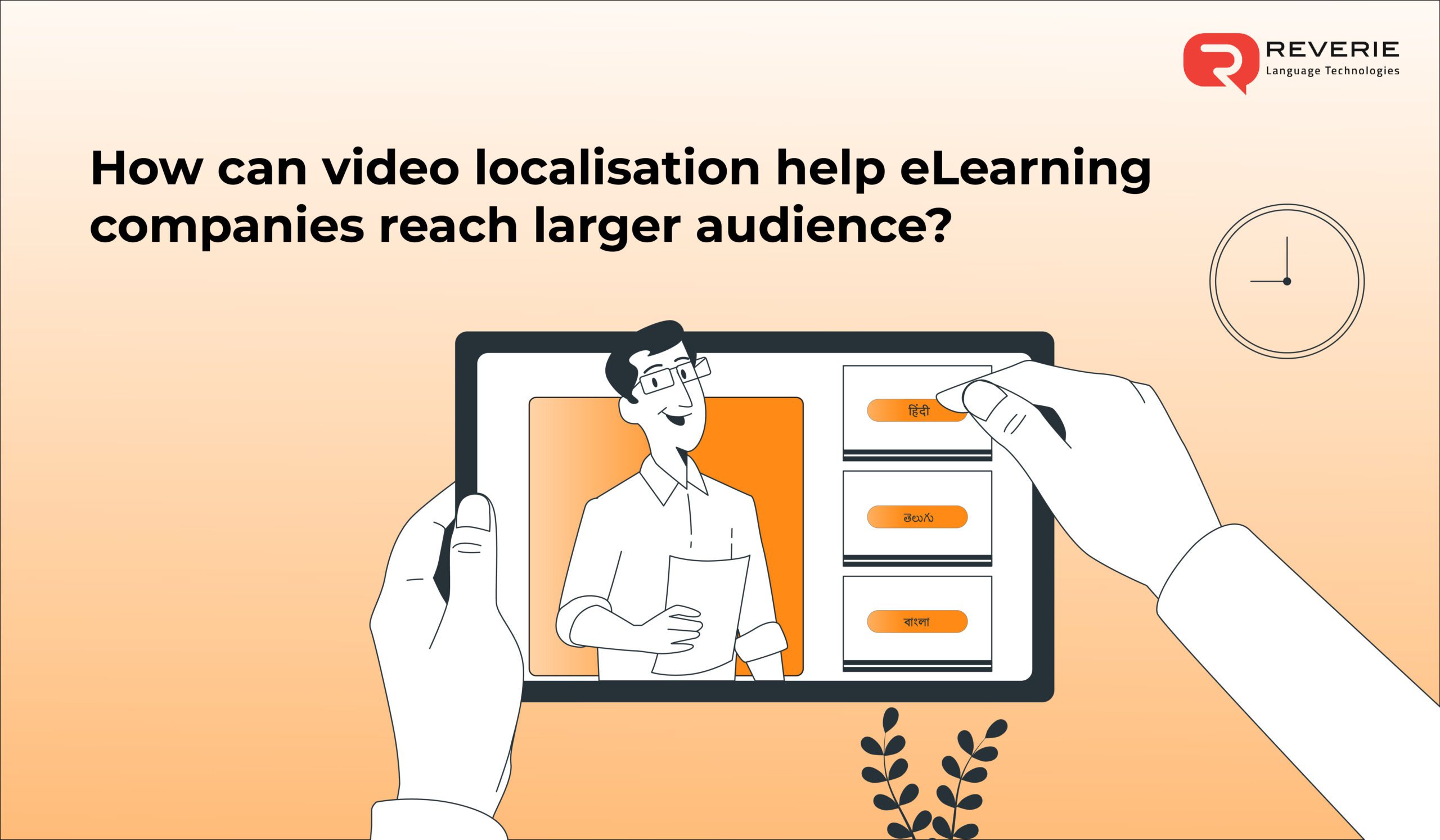Tap into new regional markets, expand reach, and win long-term student loyalty with video localisation. Today, the new-generation eLearning providers of India are taking conscious steps forward to create advanced eLearning localised video courses, reading material, and interactive content that appeals to each market their students are located in. Why now?
The Indian eLearning industry is estimated to reach USD 4 billion by 2025 at a CAGR of 39.77% compared to USD 750 million in 2020. This massive growth is the result of the COVID-19 disruptions and subsequent lockdowns, which have compelled both parents and educational institutions to implement tech-enabled learning solutions for students. As the daily active Internet user is on the rise, along with the increasing demand for academic as well as non-academic courses, the need for localised eLearning content has become imperative.
One of the latest eLearning localisation solutions adopted to meet online learning needs is Video Localisation.
How to effectively achieve Video localisation?
Multilingual educational content as a video has opened up new ways for students to learn and has also provided eLearning companies with cost-effective avenues to expand their local reach. Additionally, video localisation has also begun having a positive effect; how? – According to a survey conducted by Think With Google, 58% of respondents prefer using digital video to learn new skills.
While at the most preliminary stage of translating a video, the visual aspect of the video personalisation remains the same (as long as there are no cultural clashes). It is only the audio that gets localised. The video script is recorded in native languages and then integrated back into the video with special attention in terms of timing. Additionally, subtitling the audio content is carried out to improve local audience engagement. It helps increase video watch time and allows the viewer to get better clarity on the information conveyed. In this process, the original audio gets transcribed into subtitles, which are conveyed in simple language that are easily readable by native speakers.
In this article, we set out to explore the key benefits of video personalisation in the eLearning industry.
Benefits of Video Localisation in the Education Industry
Video localisation to tap into new local eLearning markets
Most of the educational video content available online is primarily in English and echoes a negative learning experience with Indian language speakers, with merely 10% of the enormous Indian internet user base. Multilingual video personalisation gives a video cultural context and familiarity that resonates well within the local markets. As demand for eLearning localised content is at an all-time high, it presents a massive opportunity for Indian eLearning players to increase their brand’s reach across India by localising for the new regional Indian market. Thus, uncovering new revenue streams. Video localisation in educational industry in India is a revolution that is exploring the unexplored segments of the market.
Brand recognition through video localisation
To create a positive impact and engage with the local audience effectively, eLearning video content needs to align well with the regional market’s cultural events, promote local trends, and support social issues while preserving the content’s voice and integrity. Video eLearning localisation assists eLearning brands by being in sync and localising with cultural relevances in mind. Providing relevant multilingual video content that meets the needs of native language audiences builds brand identity, turning into brand loyalty in the long run.
Video localisation to improve SEO
Adding subtitles in multiple local languages provides brands with an added advantage by improving organic reach and ranking on search engines. How? While search engine technology is continually evolving, we’re not yet at a point where algorithms can understand video content with 100% accuracy yet. At the moment, search engines analyse video content using the text associated with it. Apart from basic information, such as video tags, title, description, etc., adding localised subtitles increases a video’s keyword depth, which helps search engines index content that not only appears in tags, titles, or descriptions but also based on text found in subtitles.
Increase learner engagement via video localisation
In the modern-age eLearning landscape, videos are one of the most popular mediums to consume knowledge. Additionally, localised video content strikes a deep emotional connection that makes people want to share them within their community. According to a study, videos get 1200% more shares than text and images combined. Since the regional audience is more likely to understand and act upon a message or a call to action specially created for them, eLearning players are capitalising on eLearning localisation to spark a prolonged engagement on their multilingual video content.
With that said, eLearning in India is expected to grow to USD 10.4 billion, with over 37 million paid users by 2025. With rapidly evolving market dynamics and consumer preference towards viewing in-language, culturally relevant educational video content, eLearning companies of today are providing their local audience with the video content in various Indian languages thus providing equal access to localised multilingual video content. All these add to improving the online learning experience and optimising productivity in the Indian market through eLearning localisation solutions.
As most learning processes are happening online nowadays, more and more people are shifting towards remote learning. This presents a unique opportunity for your eLearning brand to capture new Indian regional markets by providing region-oriented educational content. If you’re planning to expand your reach and get acquainted with the newly opened Indian markets, you should start thinking about localising your educational platform and its content today!
Reverie as your Video Localisation Partner
Reverie’s AI-powered eLearning localisation solutions help you reach and educate Indian students in a language they understand by delivering an end-to-end localised eLearning experience. We help you instruct your students in 11+ Indian languages. All your online assets, such as video lectures, podcasts, images, websites, ebooks, and so on, are localised based on the language and cultural preferences of your listeners. It helps gain student favour and also enhances the learning experience. Now, with Reverie’s AI video localisation for eLearning, you can reach out to students from anywhere in India.
Our Achievements in eLearning Localisation
Reverie possesses documented experience in working with large Indian Government agencies, localising more than 210 hours of English source videos to 11 different Indian languages using Reverie’s video localisation solution within a period of 75 days.



